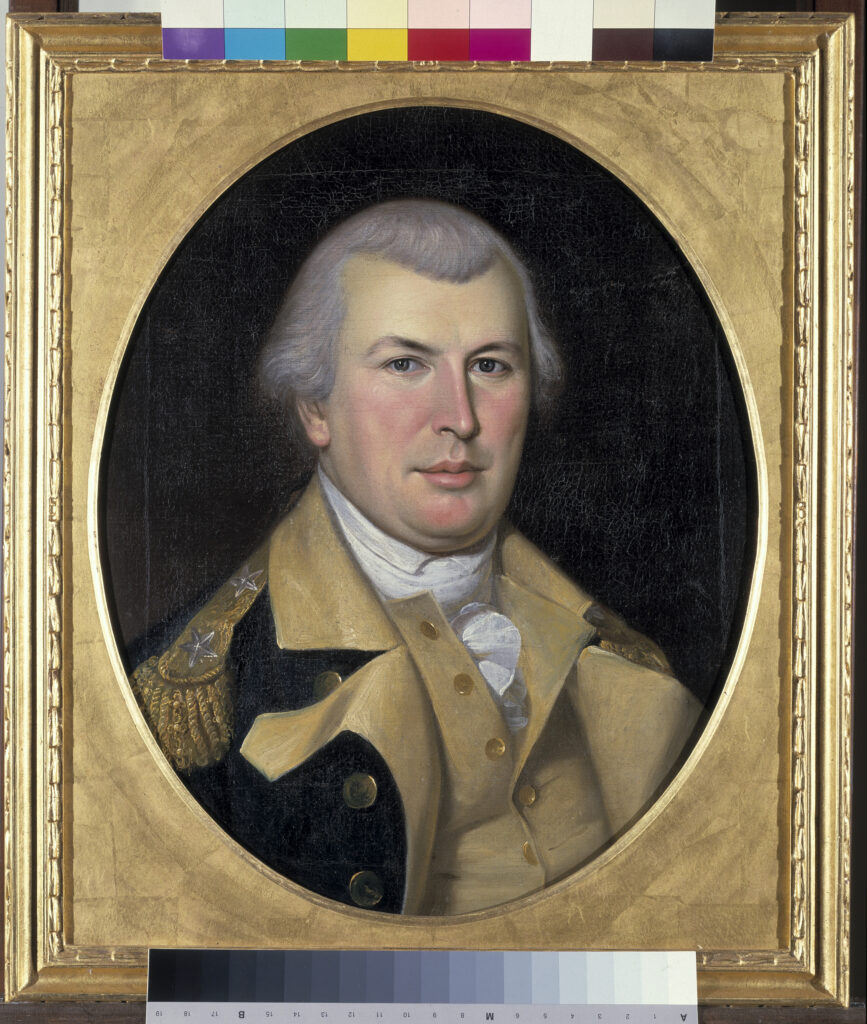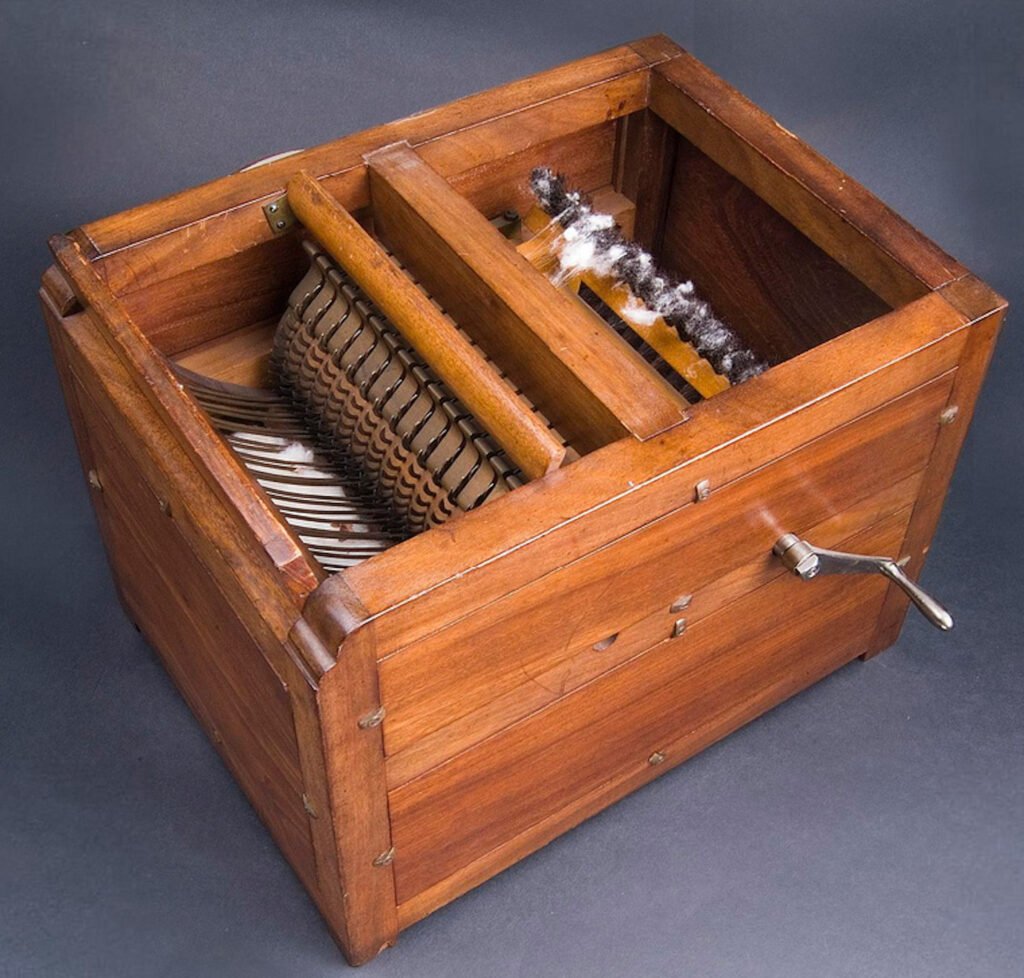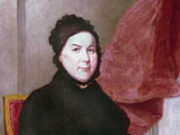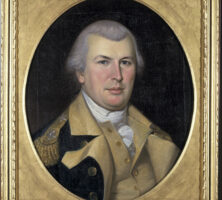Catharine “Caty” Greene was the noted wife of Revolutionary War general Nathanael Greene, the mother of five, and an active participant in events that occurred during the fight for American independence. After the Revolution, Catharine and Nathanael Greene became owners of Mulberry Grove, a plantation estate near Savannah. It was there in 1793 that Eli Whitney developed the cotton gin with the support and partnership of Catharine Greene.
Catharine Littlefield was born on February 17, 1755, off the coast of Rhode Island on Block Island, which her family had helped settle in the 1660s. Her father, John Littlefield, served in the Rhode Island legislature, and her mother, Phebe Ray, was a descendant of the earliest settlers of Block Island. Caty’s mother died when she was ten years old, and she was sent to live with an aunt and uncle, Catharine Ray and William Greene, in East Greenwich, Rhode Island.
Greene learned to read and write while living with her aunt and uncle. Her uncle was a leader of the Whig Party and governor of Rhode Island. A notable visitor was Benjamin Franklin, who had been a close friend of Greene’s Aunt Catharine. Another frequent caller was Nathanael Greene, a successful merchant who was a distant cousin of her Uncle William’s. Nathanael, the son of Rhode Island Quakers, was fourteen years older than she. The two began a courtship in 1772 and were married on July 20, 1774.
Within a year of their marriage the first shots of the American Revolution (1775-83) were fired, and Greene’s husband was selected by the Rhode Island Assembly as brigadier general, in charge of Rhode Island’s three Continental regiments. During the war Greene was not content to sit at home awaiting word of her husband. Instead, she visited him at his headquarters and joined him at his various encampments. Although friends and family were critical of her conduct, she continued to travel to battle sites and witnessed many battles firsthand.
Greene’s presence at her husband’s encampments endeared her to the troops and to the other military leaders. George and Martha Washington became friends and supporters of Greene. The trips were made more challenging when she began to have children. By 1779 she had three—George, Martha, and Cornelia—and was expecting a fourth. She was looking forward to joining her husband again when word arrived that he had been appointed commander of Washington’s southern forces. It was not until 1781 that she was able to head to Charleston, South Carolina, to join him. By then their fourth child, Nathanael Ray, had arrived.

Courtesy of Independence National Historical Park
General Greene had acquired land as compensation for his military service. Some of the land was situated in Georgia and included a plantation, Mulberry Grove, near Savannah. At the end of the war in 1783, the Greenes were considering settling at Mulberry Grove. Their fifth child had also been born, a girl named Louisa. In the fall of 1785, the Greene’s journeyed south to their new home. The children’s tutor, Phineas Miller, accompanied them. They hoped to develop Mulberry Grove into a successful venture.
Their plans were never completed. On June 19, 1786, General Nathanael Greene died suddenly, possibly of sunstroke, at the age of forty-four. Greene decided to remain in Georgia. The plantation was still not a financial success, but by 1788, with the help of the new plantation manager, the former tutor Phineas Miller, Mulberry Grove was thriving.
In 1791 the residents of Mulberry Grove entertained George Washington during his presidential tour of the South. In 1792 Greene met a young man named Eli Whitney, who was to tutor her neighbor’s children. Instead, with Greene’s encouragement he took up residence at Mulberry Grove to pursue his inventions, an endeavor that she supported. Within a year he had produced the cotton gin.

Image from National Museum of American History, Smithsonian Institution
In 1796, after a long courtship, Greene married Miller. Despite their best efforts, by 1798 Mulberry Grove fell upon hard times. Greene was forced to sell the plantation, and she subsequently moved her family to Cumberland Island. They established a new home on land that had been given to Nathanael. The plantation, located near the southern end of the island and called “Dungeness,” thrived. In 1803 Miller died. Greene stayed at Dungeness until her death in 1814, and she is buried there.








